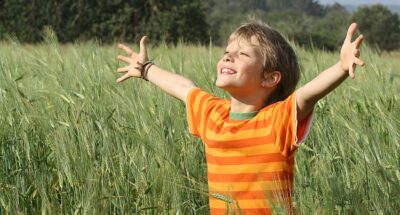
Creating Space for Forgiveness by Letting Go of Anger
Students discuss the negative consequences that anger can have, identify the benefits of letting go of anger after expressing it, and brainstorm ideas for how to cope with anger.

Students discuss the negative consequences that anger can have, identify the benefits of letting go of anger after expressing it, and brainstorm ideas for how to cope with anger.
Students will:
Take a moment to reflect on how anger makes you feel. What are some consequences of holding on to anger for too long? Have you ever done anything when angry that you regret or wish you could take back? What do you do to effectively calm down when you feel really angry? Consider making a commitment to yourself for how you would like to respond the next time you get angry.
This practice can be used on its own, but is meant to be the first in a series of practices that teach students about forgiveness. An electronic version of the entire curriculum is available through the International Forgiveness Institute website. GGIE readers are able to purchase the electronic version at a discounted price of just $15 (to order, click the “GGIE Version – Electronic” box). A printed version is available for $40.
Before teaching this lesson, we encourage you to read this short description of what forgiveness is and what it is not.
The Courage to Forgive: Educating Elementary School Children About Forgiveness
A Social Emotional Learning/Character Education Teaching Guide for Children Ages 9-12, International Forgiveness Institute
Suzanne Freedman, Ph.D., University of Northern Iowa
Robert D. Enright, Ph.D., University of Wisconsin-Madison School of Education
A study found that a forgiveness intervention increased adolescent students’ hope and willingness to forgive, and decreased their anxiety and depression. The intervention consisted of approximately 23 hours of education, which were broken down into five main sections. The first of these sections focused on understanding the destructive nature of prolonged anger and identifying ways to express anger in healthy ways.
In a second study, 4th grade students showed an increase in forgiveness and hope, and a decrease in anger after participating in a forgiveness education program.
The increase in school shootings, bullying, violence, and discrimination experienced by children and adolescents underlines the need for education that helps students cope with trauma and deep hurt, both of which can result in anger, anxiety, and depression.
Education on forgiveness is particularly important given that angry and hurt children who cannot understand their feelings often inflict anger upon others, or deny it until it erupts. Teaching children what forgiveness is and is not as well as how to forgive—including that forgiveness is a choice, does not mean condoning the behavior, and does not require them to remain friends with the person—can help create more positive and safe learning environments. Furthermore, research finds that when forgiveness occurs among friends, forgiveness is related to greater well-being for children.

Do you want to dive deeper into the science behind our GGIE practices? Enroll in one of our online courses for educators!
Comments